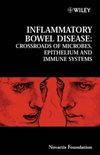Genetic blockade of the insulin-like growth factor 1 receptor for human malignancy.
引用次数: 19
Abstract
Growth factor receptor signals, including insulin-like growth factor (IGF)-1 receptor (IGF-1R), are required for carcinogenesis and tumour progression in many human malignancies. The concept of targeting specific tumorigenic receptors has been validated by successful clinical application of multiple new drugs, including trastuzumab and gefitinib. In this paper, we review strategies of the genetic blockade of IGF-1/IGF-1R that validate this receptor as a promising anticancer target. Adenoviruses efficiently transduce malignant epithelial cells in culture and are useful for such target validation and potentially also as clinical therapeutics. To block IGF-1R signalling, we constructed adenoviruses expressing antisense IGF-1R and two truncated IGF-1R (482 and 950 amino acids long, IGF-1R/482st and IGF-1R/950st, respectively) that function as dominant negative inhibitors (IGF-1R/dn). The truncated receptors were also cloned into tetracycline regulated expression vectors to study the effects of modulating this pathway without the use of viral vectors. Blocking for IGF-1R suppressed tumorigenicity both in vitro and invivo and effectively blocked both IGF-1 and IGF-2-induced activation of Akt-1. IGF-1R/dn expression increased radiation- and chemotherapy-induced apoptosis and these combination therapies with chemotherapy were very effective against tumours in mice. In an intraperitoneal dissemination mouse model, blockade of IGF-IR reduced dissemination and prolonged survival times. IGF-1R/482st was more effective than IGF-IR/950st due to its bystander effect. These studies confirm the validity of IGF-1R as a therapeutic target and genetic blockade as a potential strategy for several malignancies, including lung, colon and pancreatic carcinoma.人恶性肿瘤胰岛素样生长因子1受体的遗传阻断。
生长因子受体信号,包括胰岛素样生长因子(IGF)-1受体(IGF- 1r),在许多人类恶性肿瘤的癌变和肿瘤进展中是必需的。包括曲妥珠单抗和吉非替尼在内的多种新药的成功临床应用验证了靶向特异性致瘤受体的概念。在本文中,我们回顾了遗传阻断IGF-1/IGF-1R的策略,这些策略验证了该受体是一个有希望的抗癌靶点。腺病毒在培养中能有效地转导恶性上皮细胞,并可用于此类靶标验证和潜在的临床治疗。为了阻断IGF-1R信号,我们构建了表达反义IGF-1R和两个截断的IGF-1R(分别为482和950个氨基酸长,IGF-1R/482和IGF-1R/950st)的腺病毒,它们作为显性负抑制剂(IGF-1R/dn)发挥作用。截断的受体也被克隆到四环素调控的表达载体中,以研究在不使用病毒载体的情况下调节该途径的效果。阻断IGF-1R可抑制体外和体内的致瘤性,并有效阻断IGF-1和igf -2诱导的Akt-1活化。IGF-1R/dn的表达增加了放疗和化疗诱导的细胞凋亡,这些联合化疗疗法对小鼠肿瘤非常有效。在腹腔内播散小鼠模型中,阻断IGF-IR可减少播散并延长生存时间。IGF-1R/482 - st由于其旁观者效应而比IGF-IR/950 - st更有效。这些研究证实了IGF-1R作为治疗靶点和基因阻断作为多种恶性肿瘤(包括肺癌、结肠癌和胰腺癌)的潜在策略的有效性。
本文章由计算机程序翻译,如有差异,请以英文原文为准。
求助全文
约1分钟内获得全文
求助全文

 求助内容:
求助内容: 应助结果提醒方式:
应助结果提醒方式:


